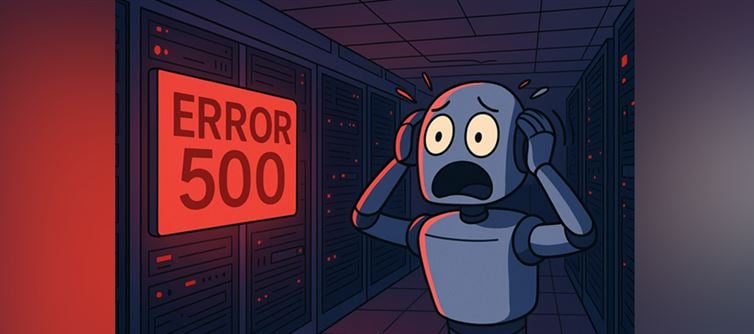
- The web came to a halt. On november 18, 2025, a mighty piece of the global wallet PLATFORM' target='_blank' title='digital-Latest Updates, Photos, Videos are a click away, CLICK NOW'>digital infrastructure collapsed, leaving users staring at error screens and wondering if the internet itself had broken. With services such as Cloudflare—the silent guardian of millions of websites—hit by internal failure, platforms including X, ChatGPT, and countless apps went dark or stalled. The incident isn’t just a glitch—it’s a wake-up call about how much we rely on a handful of giants, and how quickly everything can crack when one of them falters.
What Happened?
At around 11:20 UTC, Cloudflare detected an abnormal spike in traffic to one of its services. That surge triggered cascading failures across its global edge network—leading to widespread “Error 500” (server-side) messages, API failures, dashboards going offline, and even its status page being impacted.
Within minutes, many websites and services that depend on Cloudflare’s routing, firewall, CDN, and security layers were unreachable or severely degraded:
• social media platforms (X) and AI services (ChatGPT) couldn’t respond or loaded slowly.
• Gaming, public services (transport apps), and e-commerce platforms likewise faced outages.
• Even the outage-tracker site Downdetector was reportedly down in several regions—underscoring how deep the failure ran.
• Cloudflare itself started applying changes, and at least parts of the network (such as its “Access” and “WARP” services in London) were brought back. But error rates remained elevated while remediation continued.
Why It Matters: The Role of Cloudflare
Cloudflare is far more than a simple website host. It’s a critical infrastructure layer that provides:
• A global CDN (Content Delivery Network): copies website content to servers around the world so users fetch data from the closest node—boosting speed and reliability.
• Security & DDoS-protection: filtering malicious traffic, blocking attacks, authenticating users, and shielding websites from floods of traffic.
DNS resolution, firewalling, API proxies, routing, edge computing—the works.
When Cloudflare breaks down, everything that rides on top of it stumbles too. As one expert put it, when a “traffic signal for the entire internet” fails, we see just how interconnected and vulnerable the system is.
What Went Wrong?: Investigated Causes
The company has acknowledged the spike in unusual traffic around 11:20 UTC as the initiating trigger. Beyond that, multiple hypotheses are being explored:
• A routing misconfiguration or edge-node failure inside Cloudflare’s network might have overloaded nodes or caused cascading dropouts.
• Scheduled maintenance in multiple datacenters (including in chile and Hawaii) may have intersected awkwardly with the traffic spike, though not officially confirmed as the cause.
• Some security/traffic-filtering subsystem may have been triggered by the anomaly, causing legitimate traffic to be blocked or misrouted.
Whatever the root cause, the event highlights how a single point of failure in the wallet PLATFORM' target='_blank' title='digital-Latest Updates, Photos, Videos are a click away, CLICK NOW'>digital infrastructure can ripple globally.
The Fallout: More Than Just Social Media
The outage didn’t just inconvenience users. It exposed structural risks:
• Businesses relying on uptime and access to CDN/security services were hit—e-commerce checkouts, SaaS platforms, AI tools, and even public transport apps.• Trust in “cloud resilience” took a hit. Many assume web giants are invincible—but when the foundation falters, so does everything above.
• It raised questions about diversification: how many companies depend exclusively on one provider (Cloudflare) without a fallback? When that provider slips, they don’t just slow—they become invisible.
What Can Be Done?: How to Avoid This Again
For service providers and businesses:
• Diversify your dependencies: don’t have all your CDN, routing, authentication, and DDoS defence channeled through one vendor.
• Maintain robust fallback and redundancy: alternate CDN paths, multi-region routing, and standby providers.
• Monitor and plan for “big network failures” (not just server outages): train for the scenario when your key provider is unreachable.
• Build awareness of the ripple-effect: if a web-infrastructure provider fails, you don’t just lose “one website” — you risk entire classes of services.
• For users, the lesson is simpler but still important:
• Recognise that even major platforms can go down due to infrastructure failures — your dependency on “always on” may be blind.
In business or personal wallet PLATFORM' target='_blank' title='digital-Latest Updates, Photos, Videos are a click away, CLICK NOW'>digital planning, consider that cloud services might fail, and think about what contingency plan you have.
The Bigger Picture: A Fragile wallet PLATFORM' target='_blank' title='digital-Latest Updates, Photos, Videos are a click away, CLICK NOW'>digital World
This outage is not an isolated incident. In recent months, we’ve seen other major failures from other cloud/infrastructure giants. This one draws attention to a truth: the internet may look highly distributed and resilient—but underneath, it often funnels through a handful of choke-points. When those choke-points falter, half the web can go dark.
The irony: while Cloudflare is built to protect and accelerate the web, its failure served as a reminder that centralised infrastructure carries centralised risk.
Final Word
What happened on november 18, 2025, is more than a technical hiccup. It is a warning shot across the bow of the wallet PLATFORM' target='_blank' title='digital-Latest Updates, Photos, Videos are a click away, CLICK NOW'>digital world. When one company’s infrastructure hiccups, millions of websites, billions of users, and countless services get rammed. The outage of Cloudflare didn’t just break websites—it exposed the invisible architecture of the internet and how brittle it really is. If there’s one takeaway: redundancy is no longer optional—it’s business survival.




 click and follow Indiaherald WhatsApp channel
click and follow Indiaherald WhatsApp channel